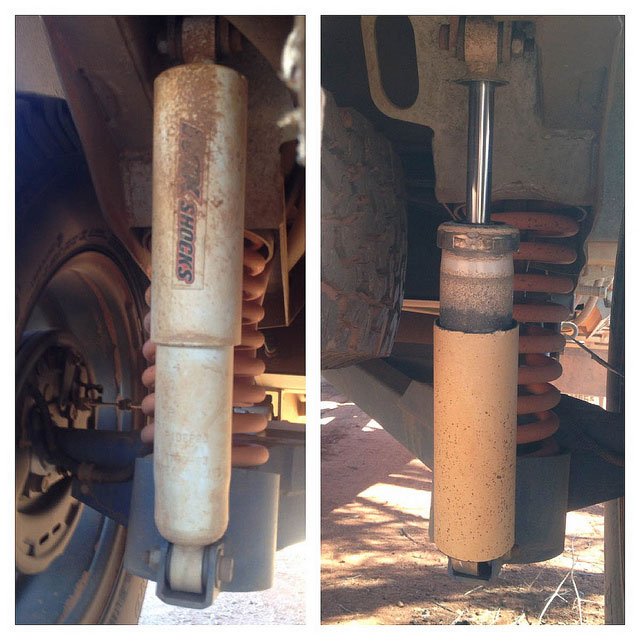The term “shock absorber” is a misnomer. Contrary to the name given to these components, shock absorbers don’t absorb shocks. The British may actually have the better name for them: Dampers.That’s a better term because that exactly what they do, they dampen the oscillations of the vehicles springs.

How they work
After a spring is deflected, it bounces back past its original position and continues to bounce up and down until its energy is dissipated and it stops moving. A heavy-duty spring, such as what’s used in a car suspension, would continue to bounce up and down for a long time if that motion weren’t controlled. Therefore, shock absorbers are fitted to dampen the up and down oscillation. That’s why the classic quick test of shock absorber action is to push down hard on one of the four corners of your car and see how long it continues to bounce up and down. If it doesn’t “damp” out quickly, the shock absorbers likely need replacing.
It started with carriages
The first horse drawn carriages weren’t fitted with shock absorbers. They bounced around quite a bit. Soon someone started to outfit these carriages with “dampers” to calm down the oscillations. In fact, these early devices were called “friction dampers” because that’s exactly what they did. As motorized carriages (early automobiles) started to evolve, these friction dampeners were used on them too.
The first hydraulics
Frenchman Maurice Houdaille is credited with inventing the first shock absorbers to take advantage of hydraulic fluid. He received his first patent in 1907, and his products eventually became standard equipment on many American automobiles. In 1927, hydraulic shock absorbers became standard equipment on the Model Ts made by Ford Corporation.
Monroe
Thompson Chrysler of Edgewood, MD, a Chrysler, Dodge, Jeep, Ram dealer, explained that Monroe Corporation was one of the first third-party manufacturers to offer hydraulic shocks to the automotive industry. Its first hydraulic shock was introduced in 1926. In 1951, the the company introduced the Monro-Matic established the industry standard for the telescopic shock absorber. This design, which still survives today, consists of a tube with a piston that moves up and down through a chamber filled with hydraulic fluid. The movement of the piston draws in or displaces fluid though small internal holes. The size and placement of the orifices determine the damping characteristics of the shock absorber.
Active shock absorbers
Today, standard hydraulic shock absorbers are still in wide use. The technology is well known and is inexpensive at this point. However, a new type of shock absorber technology is being offered by a few select manufacturers. This technology is referred to as “Active Shock Absorption.” How it works is that the rate that the shock absorbers dampen oscillations up and down is controlled by variable ports with the shocks and the whole system is controlled by a computer module. As the technology becomes more ubiquitous, we will likely see active shock absorption offered on less expensive automobiles.